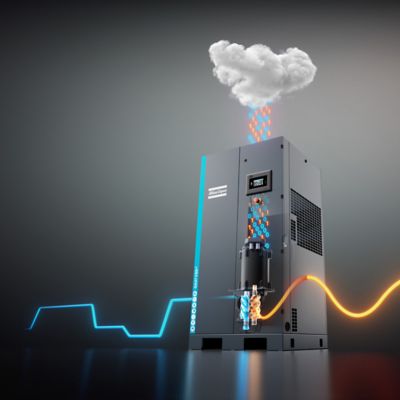27 december 2020
How Nitrogen gas is generated in the pharmaceutical industry
Estimated reading time: 5 minutes
Using Nitrogen in pharma
In the pharmaceutical industry, nitrogen gas is used to replace a hazardous or undesirable atmosphere with an inert dry atmosphere. Nitrogen gas reduces the presence of oxygen that may provide the catalyst for combustion or negatively affect product quality. Nitrogen can help maintain sterility and cleanliness of pharmaceutical products and control the level of oxygen in a workspace, lab or throughout an entire facility. Examples of nitrogen gas used in pharmaceutical manufacturing processes include: • Blanketing active and high purity pharmaceutical ingredients during manufacturing • Removing oxygen to prevent rapid oxidation and suppress fire • Ensuring an inert environment inside vaccine vials • Inert atmosphere packaging
Nitrogen in packaging
Nitrogen for product transfer
In pharmaceutical manufacturing, nitrogen is frequently used to move a reaction mixture from one vessel to another. Using a safe, inert gas to transfer liquid or powder pharmaceutical materials is crucial as they can be hazardous if improperly handled. Many pharmaceutical ingredients can be damaged or even explode if allowed to contact oxygen or water vapor.
Nitrogen generators for pharma
The air we breathe is about 78% nitrogen. Higher purity nitrogen is generated by separating nitrogen from other molecules within a clean, dry compressed air stream, resulting in a purified supply of nitrogen. Pharmaceutical companies that require a reliable source of high purity nitrogen can benefit by generating their own nitrogen in-house to reduce cost while controlling quality and boosting efficiency. Generating nitrogen in-house enhances production flexibility by ensuring that a company has the nitrogen they need, at the level of purity they need, when they need it.
Nitrogen Gas vs. Liquid Nitrogen
About 80 percent of nitrogen end uses require nitrogen as a gas, not as a liquid. Still, many companies use bottled liquified nitrogen. The primary reason nitrogen is liquified is for ease of transportation, but generating liquid nitrogen requires a tremendous amount of energy. Shifting to in-house nitrogen generation of nitrogen gas can help pharmaceutical manufacturing facilities achieve significant cost savings—from 40 to 80 percent, depending on current liquid nitrogen market prices. In-house generation of nitrogen gas also frees up space otherwise needed to store nitrogen bottles (both full and empty). There is the added benefit of a lower carbon footprint that helps companies lead the way as environmental stewards.
Ask an air system professional about the best solution for generating nitrogen in-house.

